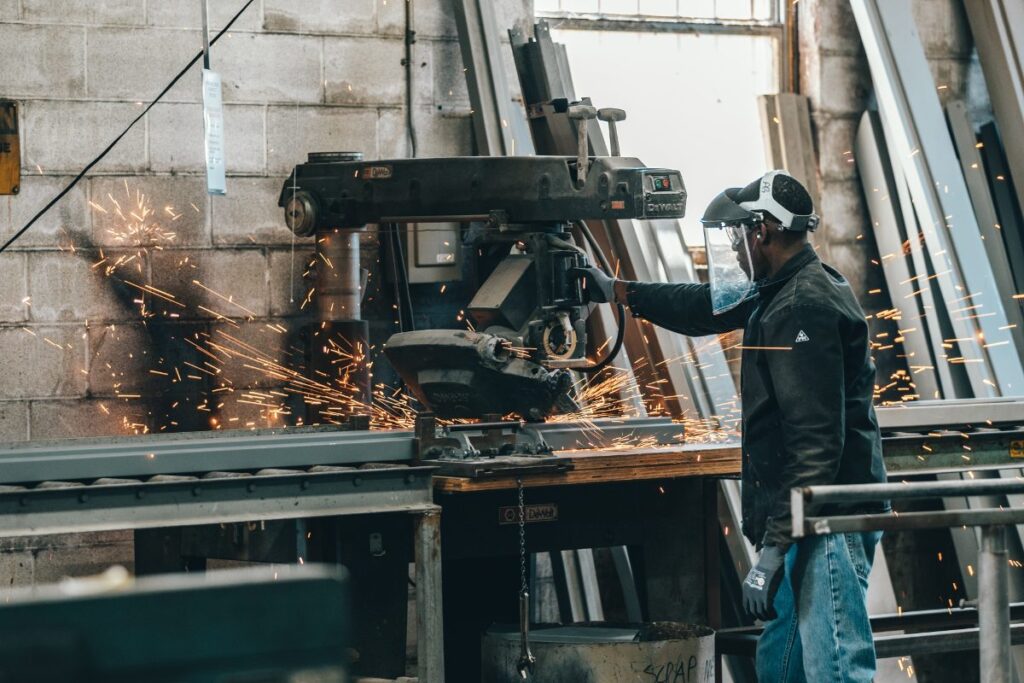The HSE have released details of a report wherein an employee was seriously injured and the British manufacturing company was fined hundreds of thousands of pounds. It was found, pressures on the maintenance team to ‘get the machine going as quickly as possible’ concluded in a serious accident. Many measures were articulated as to how health and safety could be improved and how pressures lead to injuries.
This example should be a stark reminder of how health and safety protocols need to be followed and risks need to be appropriately addressed as to not result in injury and a significant claim.
The Incident
A 59 year-old employee, who had worked as an Engineering Manager at a manufacturing business for 18 months, was repairing a box making machine. The incident occurred when his hand was drawn into a chain drive and cut off at the wrist. The employee’s hand was sewn back during an 11-hour operation but is unlikely to be the same again.
The UK engineering company was fined £115,000 and the HSE investigated.
The Investigation
It was alleged that it was customary at the firm for engineers to bypass a gate and stand in the fenced area when the machine was operating.
The HSE investigated the business’s risk management implementation:
- The company’s risk assessment was not suitable and sufficient, as it did not consider the risks associated with the use of the machine, including during maintenance activities.
- It was common practice for employees to bypass the gate to gain entry into the unsafe area of the machine. This could be down to lack of supervision or lack of awareness or lack of concern regarding safety on the part of employees, supervisors and management.
- No instructions to employees regarding safe isolation of machinery.
- No safe system of work for safe isolation and access for maintenance tasks.
- Pressure on the maintenance team to ‘get the machine going as quickly as possible’ without due regard to doing the job safely.

The Lessons Learned
This was a very serious incident and the company was proven by the HSE to have failed major health and safety measures. Therefore, there are a series of lessons that need to be learned.
Here is a checklist for businesses to review:
- Ensure that you carry out a risk assessment for all your work activities and machines, including an assessment of the task and assessment of the machine’s compliance with the Provision and Use of Work Equipment Regulations.
- Ensure you have Safe Systems of Work in place for the safe operation of machinery.
- Ensure you have Safe Systems of Work in place for cleaning of machinery and for routine maintenance activities.
- For all non-routine / unexpected maintenance, carry out a risk assessment and develop a safe working method prior to starting the activity.
- Prohibit employees and maintenance engineers from entering machinery that has not been correctly locked off safely.
- Ensure all Lock-out/Tag-out isolation points are clearly marked with signage.
- Ensure all forms of power supply have been correctly identified and isolated on the LO/TO procedure.
- Ensure all forms of stored energy sources have been safely released/discharged and where possible, physical measures to prevent movement are applied where manufacturers have stated their use
- Challenge any manager, supervisor, maintenance engineer or employee who says that they job can’t be done with the machine locked off – contact the machine manufacturer for advice if necessary.
- Some machines have a ‘safe mode’ for work which requires entry inside guarding when power needs to be on for testing. The ‘safe mode’ is usually intended to prevent the movement of dangerous parts or only allows them to move very slowly or under manual power.
- Ensure that employees understand how the system works to enable them to do the work safely – this should be incorporated into the safe system of work and should explain the limitations of the use of the ‘safe mode’.
- Ensure people are trained in the lockout procedure and that they understand all the sources of energy for the piece of equipment they will be working on, as well as how to check that stored energy will not be released during the activity.
- Ensure adequate supervision to ensure that employees follow procedures and do not take shortcuts.
- Recognise that unsafe working is a failure at all levels and anybody who deliberately allows, encourages or carries out unsafe work is dealt with appropriately in accordance with the company’s disciplinary procedures.
- Ensure that all hazardous tasks involving entering machinery enclosures etc is effectively supervised.
- Ensure you have a suitable lock-out-tag-out procedure in place for safely isolating machinery.
- Ensure that maintenance engineers, managers, supervisors and other relevant employees and are trained in the lock-out-tag-out procedures and when they need to be applied.
- Ensure you have appropriate lock out equipment for the variety of equipment that requires locking off. This can include valve lock offs, electrical lock offs, of which there is a wide variety, confined space safety covers – some suppliers of LO/TO equipment can carry out a survey to help you identify the kit that you need.
- Continually monitor safe LO/TO procedures are being correctly followed and undertake regular unannounced checks/audits.
If in any doubt, IMMEDIATLEY STOP any activities until correct LO/TO procedures have been applied.
Romero Insurance Brokers are here to help
Eliminating risks is essential to maintaining workplace safety and needs to be prioritised by business leadership. At Romero Insurance Brokers, we provide businesses and leaders with the resources to maintain a reduced risk at their premises. We offer fully comprehensive risk assessments as well as direct phone support for any claims queries clients may have.
And if something unexpected were to happen, such as a public liability case or a property damages incident, our expert claims team are ready to walk clients through the necessary steps of a claims procedure. If you need advice or help with Health and Safety protocols, please do not hesitate to contact us.



